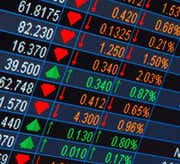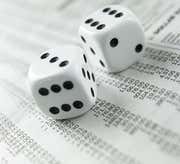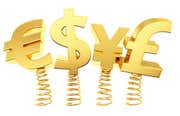Never risk more than 2% per trade. This is the most common - and yet also the most violated - rule in trading and goes a long way toward explaining why most traders lose money. Trading books are littered with stories of traders losing one, two, even five years' worth of profits in a single trade gone terribly wrong. This is the primary reason why the 2% stop-loss rule can never be violated. No matter how certain the trader may be about a particular outcome, the market, as the well known economist John Maynard Keynes, said, "can stay irrational far longer that you can remain solvent." (For more on "stop-loss" read the article The Stop Loss Order - Make Sure You Use It.)
Swinging for the Fences
Most traders begin their trading careers, whether consciously or subconsciously, by visualizing "The Big One" - the one trade that will make them millions and allow them to retire young and live carefree for the rest of their lives. In FX, this fantasy is further reinforced by the folklore of the markets. Who can forget the time that George Soros "broke the Bank of England" by shorting the pound and walked away with a cool $1 billion profit in a single day! But the cold hard truth of the markets is that instead of winning "The Big One", most traders fall victim to a single catastrophic loss that knocks them out of the game forever. (To learn more about George Soros and other great investors, read the Greatest Investors Tutorial.)
Large losses, as the following table demonstrates, are extremely difficult to overcome.
| Amount of Equity Loss | Amount of Return Necessary to Restore to Original |
| 25% | 33% |
| 50% | 100% |
| 75% | 400% |
| 90% | 1000% |
Just imagine that you started trading with $1,000 and lost 50%, or $500. It now takes a 100% gain, or a profit of $500, to bring you back to breakeven. A loss of 75% of your equity demands a 400% return - an almost impossible feat - just to bring your account back to its initial level. Getting into this kind of trouble as a trader means that, most likely, you have reached the point of no return and are at risk for blowing your account.
Why the 2% Rule?
The best way to avoid such a fate is to never suffer a large loss. That is why the 2% rule is so important in trading. Losing only 2% per trade means that you would have to sustain 10 consecutive losing trades in a row to lose 20% of your account. Even if you sustained 20 consecutive losses - and you would have to trade extraordinarily badly to hit such a long losing streak - the total drawdown would still leave you with 60% of your capital intact. While that is certainly not a pleasant position to find yourself in, it means that you need to earn 80% to get back to breakeven - a tough goal but far better than the 400% target for the trader who lost 75% of his capital. (to get a better understanding check out Limiting Losses.)
The art of trading is not about winning as much as it is about not losing. By controlling your losses, much like a business that contains its costs, you can withstand the tough market environment and will be ready and able to take advantage of profitable opportunities once they appear. That's why the 2% rule is the one of the most important rules of trading.
Forex Trading Rules: Trigger Fundamentally, Enter and Exit Technically
Related Articles
-
 Investing
InvestingLimiting Losses
It is impossible to avoid losses completely, but there is a systematic method you can use to control them. -
 Trading
TradingAre You Ready to Trade Futures?
If you want to trade futures to become rich, you'll have to answer some questions first. -
 Trading
TradingMoney Management Matters in Futures Trading
Learn how this overlooked area of trading can help improve your gains. -
 Trading
TradingBad Luck With Trades? 5 Things You Might Be Doing Wrong
If you're in a trading rut, ask yourself these five questions to help turn the corner. -
 Trading
TradingHow To Avoid The 5 Most Dangerous Market Scenarios
Recognizing the five most dangerous market scenarios can save a fortune in avoidable losses, setting the stage for long term success. -
 Trading
Trading10 ways to avoid losing money in forex
When approached as a business, forex trading can be profitable and rewarding. Find out what you need to do to avoid big losses as a beginner. -
 Trading
TradingThe 10 Worst Mistakes Beginner Traders Make
Traders generally buy and sell securities more frequently and hold positions for much shorter periods than investors, which can result in costly mistakes. -
 Trading
TradingTop Reasons Forex Traders Fail
This market can be treacherous for unprepared investors. Avoid these mistakes that keep FX traders from succeeding. -
 Trading
Trading6 Steps To A Rule-Based Forex Trading System
Learn to add structure to your trading methods with these six important steps.



